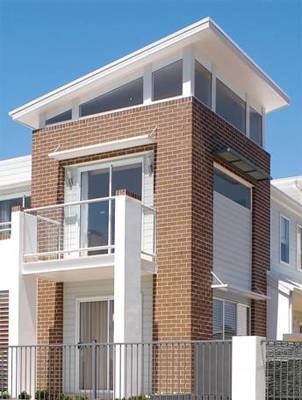Making Light Work of Choosing Bricks

Making Light Work of Choosing Bricks
With the renewed popularity of bricks driving an upsurge in new colours, textures and sizes, Boral has stepped in with an easy selection guide for today's home builder.
The ever-growing range of this durable, low maintenance and thermally efficient building material has expanded rapidly to meet the needs of architects and designers, particularly for the design of contemporary buildings.
According to David Francis, Boral National Marketing Manager Clay & Concrete, brick is definitely back. 'Bricks offer a vast choice of colours and textures, with a brick to suit all architectural styles. When you also consider the effect of mortar colour, architects can really get creative with brick. Bricks also complement other building materials which are being used increasingly in interesting combinations.
'Once the exclusive domain of the rendered finish, a smooth look can now be achieved through innovative new brick textures and colours that don't need ongoing maintenance," he added.
Boral's best-selling bricks reflect the different style preferences from State to State. 'In Queensland light colours such as Boral's Nuvo Ivory are popular, while Victorians still appreciate traditional red and brown tones, such as Boral's Horizon Mocha, a dark brown with a subtle texture.
'Recently, darker colours have grown in popularity in NSW as well as Victoria. An example of this is Boral's Nuvo Victorian Blue which has a very subtle texture, a contemporary finish and is bold in colour. It offers a dramatic result particularly when using contrasting white mortar. For an added design element, it is also available in a slimmer 50mm high size," Mr Francis added.
To ensure the right materials are selected, Boral suggests a five-step guide to choosing bricks.
Step 1: Style Explore ideas and designs to establish your preferred house design as this will greatly influence the type of brick chosen. Popular styles today include contemporary, traditional, beach and homestead, with a choice of brick for each architectural style.
Step 2: Location Whether you need general purpose or exposure grade bricks and mortar joints depends on the location of the property and the conditions it's subject to. It's preferable to use exposure grade bricks if the property is near the coast and could be subjected to air borne salt spray, usually up to one kilometre away from a surf beach.
Step 3: Colour & Texture When deciding on colour, consider all the components of the building such as the roof, guttering and fascia, as well as doors and window frames. Limit yourself to one or two trim colours and focus on texture and decorative elements to create a unique look. Remember, brick laying styles also offer choice.
Step 4: Size While the standard 76 mm high brick size remains the most popular, there is a growing interest in using different brick sizes, such as slimline and double height bricks. These can be used for the entire house or for feature walls, window sills, internal features, facades, fireplaces and architectural details.
Step 5: Mortar The mortar joint and colour can alter the appearance of bricks considerably, allowing you to achieve a relaxed light feel or a dramatic contrasting effect. The Raked version is common however Rolled or Ironed joints complement nearly all brick and house styles. Flush joints provide a flatter look by minimising shadow.
For professionally developed colour schemes that recommend modern tonal combinations across bricks, pavers, roof tiles and complementary fascia and gutter trim options, refer to the Boral Colour Inspiration Cards at www.boral.com.au/colourinspirations
For more information visit www.boral.com.au or call 1300 134 002
MORE





